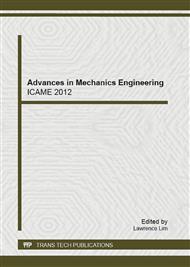p.1171
p.1178
p.1184
p.1188
p.1194
p.1199
p.1204
p.1208
p.1214
The Influence of General Disturbances on the Hammerstein Model Identifications
Abstract:
The linear dynamic Hammerstein model presents some static nonlinearity. The predominant method to estimate the components of this model is to minimize the error between the simulated and measured outputs. Taking the Gaussian input signals into account, we can estimate the linear part of the Hammerstein model by using the Buss gang’s classic theory. Accordingly, considering the case in point with the general disturbances, we come up with the maximum likelihood methodology.
Info:
Periodical:
Pages:
1194-1198
Citation:
Online since:
November 2012
Authors:
Price:
Сopyright:
© 2012 Trans Tech Publications Ltd. All Rights Reserved
Share:
Citation:


